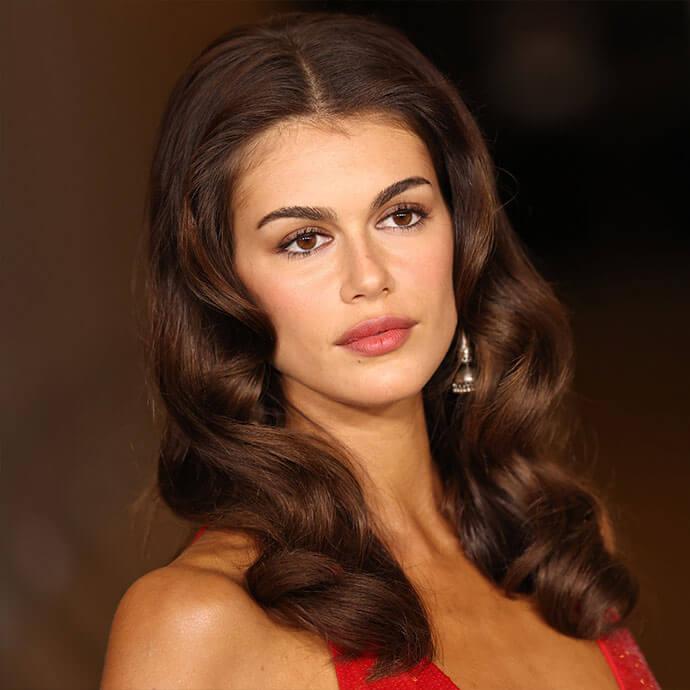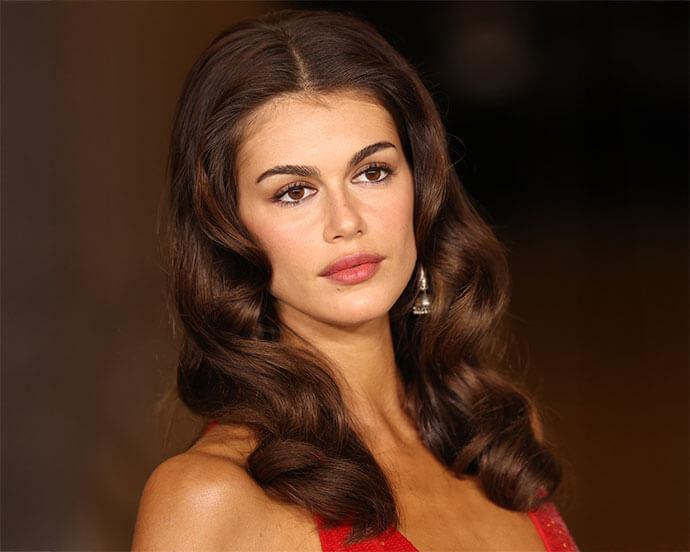Yes, You Can Revive Your Heat-Damaged Curls: Here’s How



Brittany Leitner


Photo by Delmaine Donson/Getty Images
All hair types are not created equally—and what that really means is just that different hair types require different levels of care, not that any one type is more beautiful than the other. A product that works on someone with thin, straight hair, is not going to do the same miracle work for someone with thick, curly hair. Beauty is, after all, basic science, and once you’ve mastered what works for your hair, you’ll feel truly unstoppable. And that’s exactly what we want for you!
Curls can go through a lot. With all of the products, diffusing, and heat styling that goes into them, a little heat damage is a normal side effect. But that doesn’t mean you can’t bring your tired, dry curls back to life. Today, we’re breaking down exactly how to care for heat-damaged curly hair that’s in desperate need of a refresh and revival. To find out everything you need to know, we tapped celebrity hairstylist Jerome Lordet.


It's about glam time you treated yourself.
MEET THE EXPERT
Jerome Lordet is a celebrity hairstylist and owner of the Jerome Lordet Salon in New York City.
Does Curly Hair Have Special Care Needs?
Healthy curly hair has different needs from other hair types, so if hair is also heat damaged, it will need to be tackled in a unique way. “Curly hair is naturally drier and more fragile than straight hair due to its spiral shape, which makes it harder for natural oils to travel down the hair shaft,” explains Lordet. “This means curly hair needs extra moisture, gentle handling, and specific products that enhance definition without stripping away essential hydration.”
When it comes to getting those bouncy, full-of-volume curls you see in magazines, moisture maintenance is definitely key.
What Does Heat-Damaged Curly Hair Look Like?
According to Lordet, there will be a few visible signs to note if you have heat-damaged hair. “Heat-damaged curly hair often appears limp, frizzy, and uneven in texture,” he says. “You might notice some curls that no longer spring back or have lost their shape entirely. In severe cases, the hair feels brittle, looks dull, and may break easily.” If you want an even more obvious sign? Lordet says you can tell your hair is in need of some serious revival from heat damage if your “natural curl pattern doesn’t return after washing and air-drying.”
How to Repair the Heat Damage on Your Curly Hair
The good news is, there are a few actionable steps you can take to revive your heat-damaged hair. Here are the top five that Lordet suggests:
Deep-Conditioning Treatments: This should be done weekly. “Use a deep conditioner rich in moisturizing ingredients like shea butter, coconut oil, or avocado oil to replenish lost hydration and elasticity,” says Lordet. We love the BRIOGEO HAIR CARE Don't Despair, Repair! Deep Conditioning Mask, which is packed with rosehip oil and B vitamins.
Protein Treatments: “Look for masks that include hydrolyzed proteins like keratin or silk protein. These help to strengthen the hair shaft and rebuild the structure of weakened curls,” says Lordet. We’re big fans of the KARMA BEAUTY Color Safe Keratin Hair Mask that works from the scalp all the way through to hair’s ends.
Trim Damaged Ends: Regular trims aren’t just a beauty myth! They can actually help your hair grow longer, even though technically, in the moment, you’re cutting it shorter. Lordet says this will also help “restore shape to your curls.”
Avoid Heat & Embrace Air-Drying: This one might seem obvious, but Lordet says giving hair a break from heat tools is crucial. Instead of blow-drying, “use a microfiber towel or cotton T-shirt to dry, and consider diffusing on cool if needed,” he says.
Use Curl-Enhancing Leave-Ins: Remember when we talked about hydrating curls? Lightweight leave-in conditioners are perfect for this. Lordet suggests finding one that has “ingredients like aloe vera or flaxseed to help define and support your natural curl pattern as it recovers.” We’re fans of the MARC ANTHONY Strictly Curls® Curl Envy Leave-In Conditioner that also helps maintain frizz.
Liked this post? Share!
Related Stories


Hair
6 Hair Trends Set to Take Over in 2026, From Bixie Cuts to Bouncy Blowouts
Published on Dec 5, 2025 • 5 min read


Hair
21 Easy Hairstyles to Enhance Your Natural Curls and Coils
Published on Dec 3, 2025 • 11 min read


Hair
The Ultimate Guide to Styling Short Hair
Published on Dec 1, 2025 • 11 min read


Hair
From Bangs to Blonde: The Hair Trends Taking Over 2025
Published on Dec 16, 2024 • 5 min read


Hair
Scalp Exfoliation Is the Key to Healthier Hair—Here’s How to Do It Correctly
Published on Nov 21, 2025 • 9 min read


Hair
The 10 Best Hair Masks and Conditioners to Promote Hair Growth
Published on Mar 11, 2024


Hair
20 Trendy Hairstyles That’ll Make You the Life of the (Holiday) Party
Published on Oct 15, 2025 • 9 min read


Hair
Easy Thanksgiving Hairstyles to Look Polished While You Feast
Published on Oct 2, 2025 • 6 min read


Beauty Picked Just for You
Get 5 products worth up to $70
Plus exclusive access to epic deals up to 80% off
Starting at just $14/month. Cancel anytime.